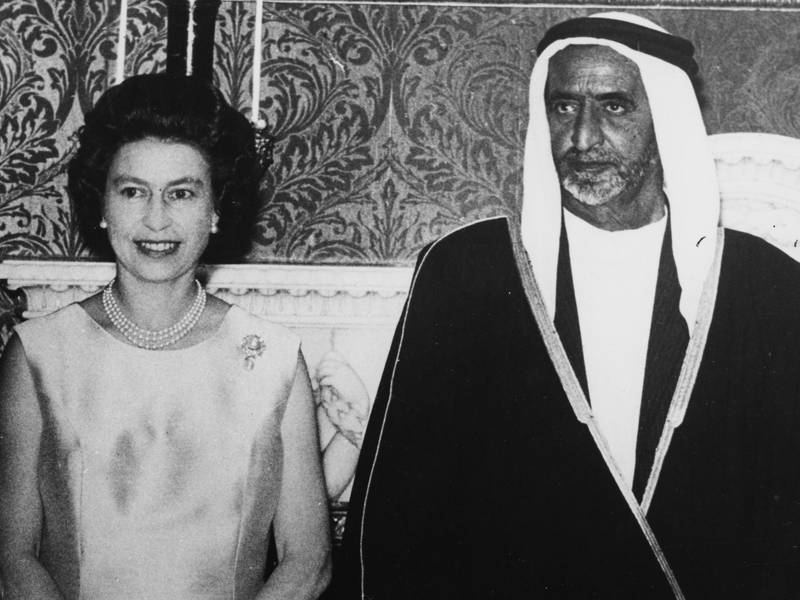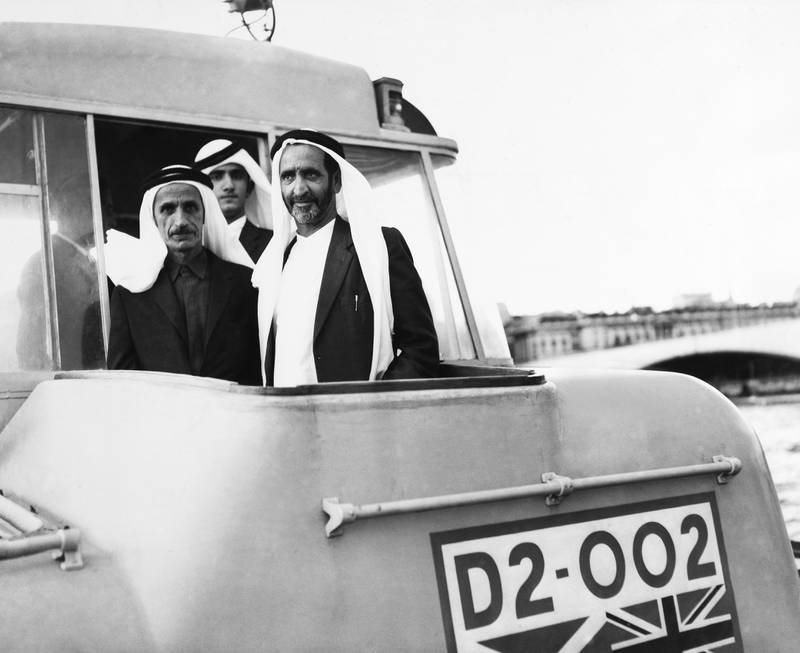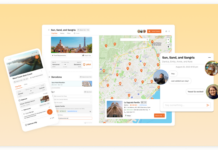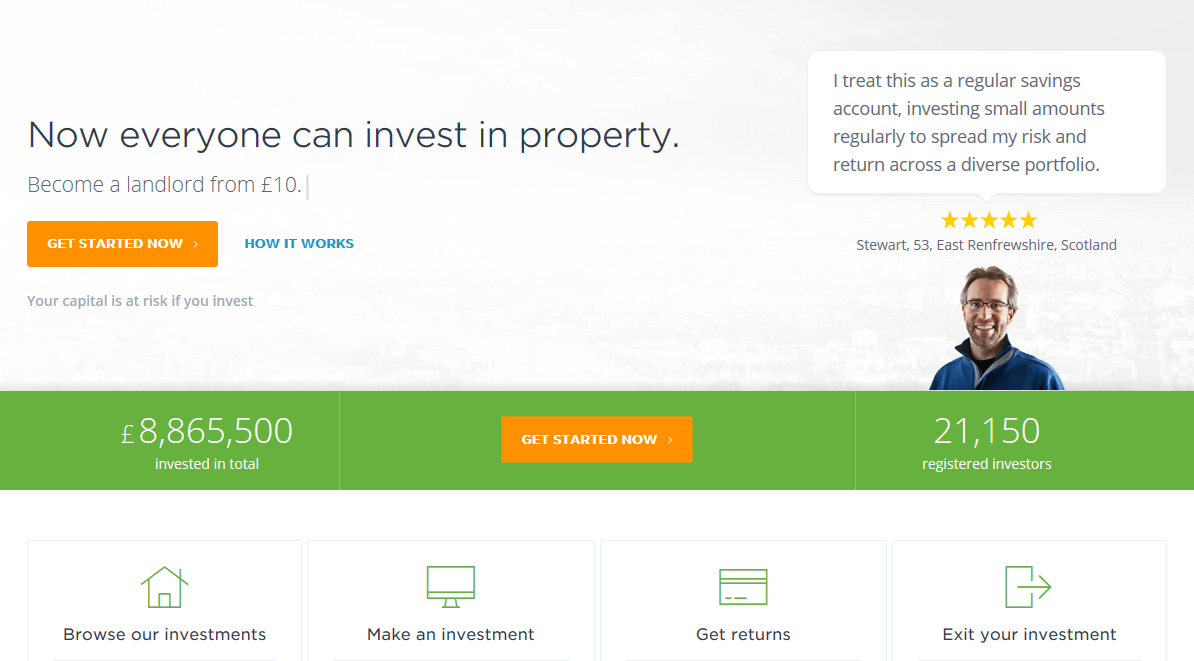Imagine a time sixty years ago when Sheikh Rashid bin Saeed Al Maktoum, the former Ruler of Dubai, embarked on a visit to London. This was not his first visit to the English capital, but it would prove to be significant in shaping the future of Dubai. Accompanied by his sons Sheikh Maktoum, Sheikh Hamdan, and Sheikh Mohammed bin Rashid, the current Vice President and Ruler of Dubai, their visit caught the attention of the British press and left a lasting impact on Dubai’s development. From experiencing the iconic River Thames on a hoverbus to seeking permission to build an airport, Sheikh Rashid’s visits to London played a crucial role in transforming Dubai into the global destination it is today.

Heading 1: Sheikh Rashid’s First Visit to London (1959)
Sheikh Rashid bin Saeed Al Maktoum, the former Ruler of Dubai, made his first visit to London in 1959. Accompanied by his sons Sheikh Maktoum, Sheikh Hamdan, and Sheikh Mohammed bin Rashid, this visit had a significant purpose. The Dubai Ruler aimed to secure permission to build an airport in Dubai, as he recognized the importance of having an airport for the city’s growth and development. During their visit, Sheikh Rashid and his sons explored various places in London, which caught the attention of the British press and added to the splendor of the visit.
Subheading 1: Purpose of the Visit
The purpose of Sheikh Rashid’s first visit to London in 1959 was to secure permission to build an airport in Dubai. At that time, Dubai was a British protectorate, and Sheikh Rashid knew that for Dubai to become a global destination, it needed an airport. Despite the British authorities initially denying the request due to the existence of a landing strip in Sharjah, Sheikh Rashid persisted and argued that he knew what Dubai needed best. Ultimately, his determination paid off, and the permission to build the airstrip was granted during this visit. This airport, now known as Dubai International Airport, has become one of the busiest airports in the world.
Subheading 2: Places Visited
During their visit to London in 1959, Sheikh Rashid and his sons explored several notable places in the city. They visited Madame Tussauds wax museum on Marylebone Road, where they could marvel at the lifelike wax figures of famous personalities. They also had the opportunity to visit the Land Rover factory in Solihull, Birmingham, which showcased the manufacturing process of these iconic vehicles. Additionally, Sheikh Rashid and his sons visited the Tower of London, where they had the privilege of viewing the precious Crown Jewels. They even had the chance to experience the London Underground and visit the renowned jewellers at Garrard on Regent Street.
Subheading 3: Importance of the Visit
Sheikh Rashid’s first visit to London in 1959 was of great importance for the future development of Dubai. His persistent efforts to secure permission for building an airport in Dubai were successful during this visit, laying the foundation for Dubai’s emergence as a global aviation hub. This visit also highlighted Sheikh Rashid’s visionary leadership and his understanding of the infrastructural needs for Dubai’s growth. The visit garnered attention from the British press, further enhancing the reputation and recognition of Dubai on an international scale.
Heading 2: Sheikh Rashid’s Second Visit to London (1963)
After his initial visit in 1959, Sheikh Rashid made a second visit to London in 1963. This visit was marked by a unique experience on the Denny 02 hoverbus, which had an impact on Denny Hovercraft Ltd., the company behind the revolutionary hoverbus. Sheikh Rashid’s visit also had a significant connection to the development of Dubai.
Subheading 1: Experience on the Denny 02 hoverbus
During his visit in 1963, Sheikh Rashid had the opportunity to experience the River Thames on the Denny 02 hoverbus. This innovative and revolutionary mode of transportation had caught his interest, and a photograph captured the moment when Sheikh Rashid and his entourage, dressed in traditional attire, boarded the hoverbus. The hoverbus, unveiled by Denny Hovercraft Ltd., had a top speed of 25 nautical knots and could carry up to 70 passengers. While the Denny 02 hoverbus did not meet evaluation standards and ultimately led to the liquidation of Denny Hovercraft Ltd., it left a lasting impression on Sheikh Rashid and contributed to his vision for Dubai’s development.
Subheading 2: Impact on Denny Hovercraft Ltd.
Sheikh Rashid’s experience on the Denny 02 hoverbus had a significant impact on Denny Hovercraft Ltd., the Scottish company behind the hoverbus. The company had perhaps hoped to impress Sheikh Rashid during his visit and secure a potential order for a fleet of hoverbuses for Dubai. However, due to the hoverbus not meeting evaluation standards, Denny Hovercraft Ltd. faced financial difficulties and eventually went into liquidation. Nonetheless, Sheikh Rashid’s encounter with the Denny 02 hoverbus remains a part of the history of Dubai’s quest for technological advancements and innovative transportation solutions.
Subheading 3: Connection to Dubai’s Development
Sheikh Rashid’s second visit to London and his experience on the Denny 02 hoverbus had a direct connection to the development of Dubai. Even though the hoverbus itself did not become a part of Dubai’s transportation system, Sheikh Rashid’s interest in innovative modes of transportation showcased his commitment to embracing progress and modernization. This commitment to development and the pursuit of novel ideas played a significant role in shaping Dubai’s transformation into a modern city known for its architectural marvels and advanced infrastructure.

Heading 3: Dubai’s Ambitions and the Need for an Airport
Sheikh Rashid recognized the ambitious goals of Dubai and understood the crucial role of an airport in realizing these aspirations. This section explores the clearing of Dubai Creek, the importance of an airport, and the permission to build Dubai International Airport.
Subheading 1: Clearing Dubai Creek and Trade Expansion
Around the time of Sheikh Rashid’s first visit to London in 1959, Dubai Creek faced challenges due to sand build-up, making it unsafe for boats to navigate. Sheikh Rashid understood that if Dubai aimed to expand its trade and become a global destination, the issue of the creek had to be addressed. Accordingly, dredgers were deployed to clear the creek, allowing larger ships to enter Dubai for trade purposes. This monumental effort demonstrated Sheikh Rashid’s commitment to creating favorable conditions for economic growth and establishing Dubai as a key player in international trade.
Subheading 2: Importance of an Airport
Sheikh Rashid recognized the vital role an airport played in facilitating travel, promoting tourism, and attracting investment. During his visits to London, he observed the efficiency and impact of international airports on cities and the opportunities they offered. Fully aware of the potential Dubai held, Sheikh Rashid was determined to secure permission to build an airport in Dubai. This vision foresaw Dubai’s emergence as a global aviation hub and a gateway to the rest of the world, fostering economic growth and international connections.
Subheading 3: Permission to Build the Dubai International Airport
Sheikh Rashid’s persistence and diplomatic efforts during his visits to London led to a significant outcome – the permission to build the Dubai International Airport. At a time when Dubai was a British protectorate, Sheikh Rashid’s determination to establish an airport in Dubai prevailed. His unwavering belief in knowing what Dubai needed best convinced the British authorities to grant permission for the construction of the airport. This decision laid the foundation for Dubai International Airport, which has since become one of the busiest and most important airports worldwide, playing a crucial role in connecting the city to the global economy.
Heading 4: Sheikh Rashid’s Subsequent Visits to the UK
After his initial visits in 1959 and 1963, Sheikh Rashid continued to visit the UK throughout his reign. These subsequent visits were marked by diplomatic charm, a special relationship with Queen Elizabeth II, and the ongoing development of modern Dubai.
Subheading 1: Diplomatic Charm and Influence
Sheikh Rashid was known for his diplomatic charm and influential presence during his visits to the UK. His warm and friendly approach endeared him to both the British public and their political leaders. Sheikh Rashid’s ability to build relationships and communicate effectively contributed to the growing recognition and support for Dubai’s ambitions. His visits acted as catalysts for further collaborations, investments, and partnerships that propelled Dubai’s development.
Subheading 2: Relationship with Queen Elizabeth II
Sheikh Rashid shared a special relationship with Queen Elizabeth II. In 1969, a photograph captured a memorable moment of Sheikh Rashid alongside Queen Elizabeth II at Buckingham Palace. This photograph symbolized the close ties between the rulers of Dubai and the British monarchy. Sheikh Rashid’s visits and interactions with Queen Elizabeth II further solidified the diplomatic bond between the two nations and reinforced the mutual respect and collaboration between Dubai and the UK.
Subheading 3: Development of Modern Dubai
Sheikh Rashid’s subsequent visits to the UK coincided with Dubai’s ongoing transformation into a modern and progressive city. The Dubai he envisioned was one that embraced technological advancements, architectural marvels, and economic growth. These visits provided Sheikh Rashid with the opportunity to witness the latest developments in various sectors, gather ideas, and establish partnerships that would shape Dubai’s future. His visits contributed to the continuous development of modern Dubai and laid the groundwork for its success as a global city.

Heading 5: Legacy of Sheikh Rashid’s Visits to London
Sheikh Rashid’s visits to London left a lasting legacy that continues to shape modern Dubai. This section explores the international reputation of modern Dubai, contributions to economic growth, and the recognition of Sheikh Rashid’s visionary leadership.
Subheading 1: Modern Dubai’s International Reputation
The visits of Sheikh Rashid to London played a crucial role in establishing Dubai’s international reputation. His interactions with British leaders, dignitaries, and the public helped put Dubai on the map as a global player and a promising destination for trade, investment, and tourism. The exposure and recognition gained through these visits set the stage for Dubai’s growth into a bustling metropolis and a hub of innovation and opportunity.
Subheading 2: Contributions to Economic Growth
Sheikh Rashid’s vision for Dubai extended beyond infrastructure and international relations. His visits to London paved the way for economic growth and prosperity in Dubai. The construction of Dubai International Airport and the investments and collaborations stemming from his visits stimulated various sectors of the economy, including tourism, trade, and finance. The economic growth witnessed in Dubai today can be attributed, in part, to the groundwork laid during Sheikh Rashid’s visits to London.
Subheading 3: Recognition of Sheikh Rashid’s Vision
The impact of Sheikh Rashid’s visits to London and his visionary leadership has not gone unnoticed. His relentless pursuit of Dubai’s development, diplomacy, and foresight in recognizing the city’s needs and potential have earned him recognition as a key figure in Dubai’s history. Sheikh Rashid’s visits to London are remembered as pivotal moments that paved the way for Dubai’s transformation into a global city and serve as a testament to his enduring legacy.

In conclusion, Sheikh Rashid’s visits to London in 1959 and 1963 were instrumental in shaping the future of Dubai. These visits not only secured permission to build Dubai International Airport but also showcased Sheikh Rashid’s visionary leadership, diplomatic charm, and commitment to progress. The impact of his visits continues to be felt today, as Dubai thrives as a global destination and a testament to his forward-thinking vision.











